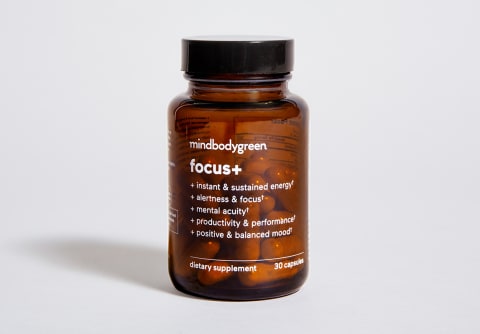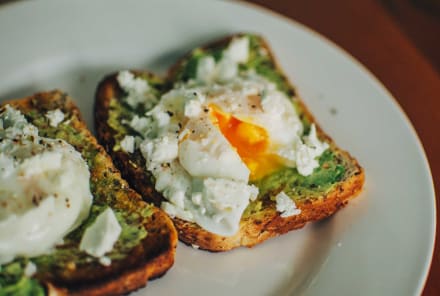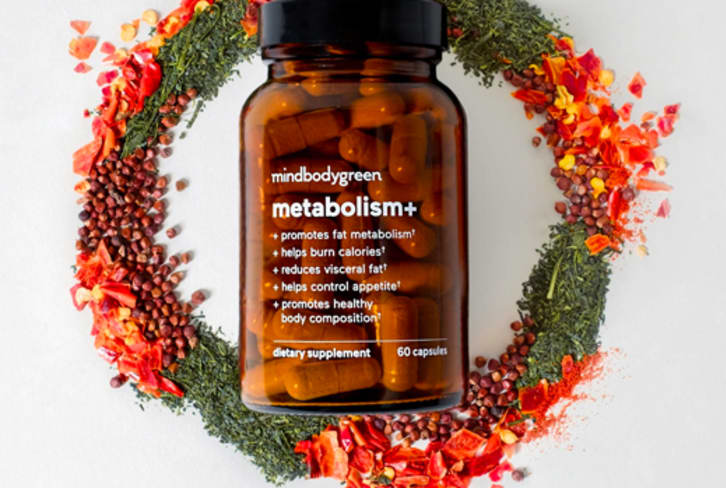Advertisement
Happy Brain Chemicals: What Are They + How To Get More

Happiness is not just about good things happening in your life; a lot of it has to do with brain chemistry. The brain and body communicate to one another through neurotransmitters and, when activated, that communication results in the body releasing four primary hormones known as “happy hormones.” These happy brain chemicals include dopamine, serotonin, oxytocin, and endorphins.
By understanding which brain chemicals cause a joyful effect, you can neurohack your way to happiness by doing things that release those happy hormones.
Dopamine
Dopamine promotes positive feelings1 of pleasure and motivational control. It’s known to encourage a healthy memory, better sleep, and focused concentration.
“Dopamine is a chemical messenger in the brain that helps us feel good and motivated, and it can also affect our mood and emotions,” Kasparas Aleknavičius, M.D., head of medical affairs at Kilo Health explains. “When dopamine is released, it tells our brain that something good is happening and reinforces behaviors that lead to those good outcomes.”
This neurotransmitter aids in oxidative stress balance, supports cognitive function, and promotes a positive mood. Dopamine can also contribute to happiness by promoting cerebral blood flow and encouraging feelings of pleasure, motivation, alertness, and focus.
Serotonin
Serotonin promotes feelings of happiness by supporting a happy mood, regularity (i.e., healthy, normal poops and digestion), and sleep hygiene.
“Serotonin is a neurotransmitter that plays an important role in regulating mood, sleep, appetite, and other bodily functions,” Aleknavičius explains. “Overall, [it] helps regulate our emotions and behaviors.”
Oxytocin
Oxytocin is often released during positive physical interactions (e.g., with a partner, parent, sibling, or friend). The body and brain interpret social interactions and positive physical touch as a reward.
This happy hormone is also essential for managing healthy stress levels2 and is a critical natural aid during childbirth.
“Oxytocin is often called the ‘love hormone’ because it is released in response to social bonding and closeness, such as during childbirth, breastfeeding, and hugging,” Aleknavičius says. “Oxytocin acts on the brain to promote feelings of trust, empathy, and attachment, and it can also have physical effects.”
For example, when the baby’s body pushes against the cervix in childbirth, it stimulates nerve impulses that cause oxytocin to release3 into the bloodstream, therefore signifying to the uterus it’s time to begin contractions and, eventually, push.
Endorphins
Endorphins are often associated with exercise, but other acts—such as sexual activity, eating, and drinking—can also release endorphins.
The release of this happy hormone can help support feelings of comfort and promote well-being.
How to get more “happy brain chemicals.”
Wondering what you can do to get more happy brain chemicals? Start with these actionable tips:
Take a nootropic supplement.
One easy way to help enhance happy brain chemicals is with a premium nootropic supplement, particularly a focus and concentration supplement with ingredients clinically shown to promote healthy neurotransmitter levels, like mindbodygreen’s focus+.*
This clean, plant-based formulation is chock-full of botanicals (Panax ginseng, guarana), vitamin B12, phytonutrient (caffeine from coffee fruit and beans), and bioactives (L-theanine) that help modulate healthy serotonin and dopamine balance to deliver mood support, enhance concentration, and promote a zen-like flow state.*
Increase your tryptophan intake.
Foods rich in tryptophan—e.g., turkey, oats, nuts and seeds, chicken, tuna, milk, and chocolate—can bolster the production of the mood-boosting hormone serotonin. In a 2022 study published by Nutritional Neuroscience, egg protein hydrolysate (a dietary supplement rich in tryptophan) was found to acutely affect cognition, mood, and stress management4.
Because tryptophan triggers the release of serotonin, it can also help support exercise motivation and an enhanced mood.
Increase your physical activity.
Physical activity encourages the release of endorphins, dopamine, and serotonin5, according to a 2017 Brain Plasticity review.
The general rule of thumb is at least 30 minutes of moderate physical activity per day. To glean more of the benefits of endorphins, dopamine, and serotonin, try to stand or walk more often than you sit throughout the day.
Get more sunlight.
According to a 2014 review published by Cell, sun exposure causes the top layer of our skin to produce beta-endorphin6. Once released into the bloodstream, beta-endorphin travels to the brain the same way other reward-inducing hormones would.
While sunscreen should always be worn, anywhere from five to 30 minutes spent in the sun may be enough to provide the happy hormone-inducing benefits.
During the winter, a lack of sufficient natural light can upset the body’s natural circadian rhythm. In an effort to get more sun exposure (and therefore, higher levels of happy brain chemicals), try a light therapy lamp for enhanced focus and boosted mood and energy.
Engage in physical touch.
Any kind of touch—whether that’s a hug, kiss, cuddling, or sexual activity—encourages the production of oxytocin.
Falling in love or spending time with someone you feel attached to can also activate oxytocin levels. As such, one of the easiest ways to increase this happy brain chemical is to spend quality time with loved ones, interact in social settings, and physically touch other people.
The takeaway.
Happy brain chemicals can support a happy mood. In some cases, these happy hormones can even encourage feelings of motivation, alertness, and focus.
There are several ways to get more happy brain chemicals—including natural methods like working out, getting more sunlight, touching and spending time with the people you love, and taking a daily supplement shown to both modulate healthy neurotransmitter balance and enhance cognitive performance, alertness, and concentration (like mindbodygreen’s focus+).*
6 Sources
- https://www.ncbi.nlm.nih.gov/pmc/articles/PMC3032992/
- https://pubmed.ncbi.nlm.nih.gov/15834840/#:~:text=Oxytocin%20can%20induce%20anti%2Dstress,it%20promotes%20growth%20and%20healing.
- https://pubmed.ncbi.nlm.nih.gov/31399062/
- https://www.tandfonline.com/doi/full/10.1080/1028415X.2022.2047435
- https://www.ncbi.nlm.nih.gov/pmc/articles/PMC5928534/
- https://www.ncbi.nlm.nih.gov/pmc/articles/PMC4117380/
Watch Next
Enjoy some of our favorite clips from classes
Enjoy some of our favorite clips from classes
What Is Meditation?
Mindfulness/Spirituality | Light Watkins
Box Breathing
Mindfulness/Spirituality | Gwen Dittmar
What Breathwork Can Address
Mindfulness/Spirituality | Gwen Dittmar
The 8 Limbs of Yoga - What is Asana?
Yoga | Caley Alyssa
Two Standing Postures to Open Up Tight Hips
Yoga | Caley Alyssa
How Plants Can Optimize Athletic Performance
Nutrition | Rich Roll
What to Eat Before a Workout
Nutrition | Rich Roll
How Ayurveda Helps Us Navigate Modern Life
Nutrition | Sahara Rose
Messages About Love & Relationships
Love & Relationships | Esther Perel
Love Languages
Love & Relationships | Esther Perel


















